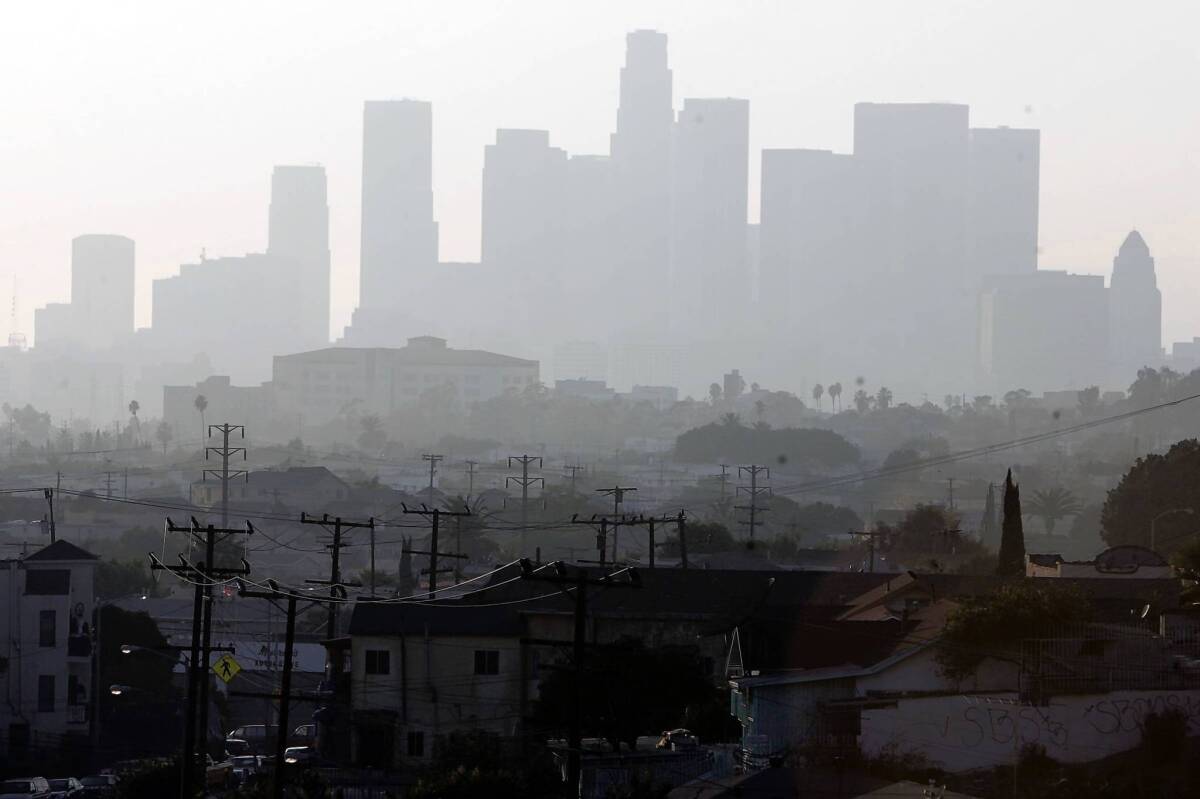California must adopt aggressive climate-change policies, report says

- Share via
California will fall short of its goal to slash greenhouse gas emissions by midcentury unless it adopts aggressive policies to fight climate change, a new report says.
The state is still on track to cut emissions of carbon dioxide and other heat-trapping gases to 1990 levels by 2020, according to a report released Monday by the U.S. Department of Energy’s Lawrence Berkeley National Laboratory.
But reducing those emissions to 80% below 1990 levels by 2050, as required under a 2005 executive order by Gov. Arnold Schwarzenegger, will not be possible without new policies and technological innovations, the report said.
The study used a computer model to project how the state’s greenhouse gas output would decrease under three different scenarios, beginning with the policies the state has committed to follow.
Even under the most ambitious scenario, in which 51% of the state’s electricity would come from renewable sources and passenger vehicles would average 78 miles per gallon, the state would release the equivalent of 188 million metric tons of carbon dioxide a year by 2050, far higher than the state-mandated target of 85 million metric tons.
“It is a very ambitious target and we can’t get there with existing policies and technologies,” said Jeffery Greenblatt, a staff scientist at Lawrence Berkeley National Laboratory, who wrote the report.
Emissions totaled 448 million metric tons in 2011 and have been trending downward for the last decade, the study said.
State regulators and environmental groups said the report was encouraging, showing that California is on a path to continue reducing carbon emissions over the next 10 to 20 years.
“We are aware that there is going to have to be more progress,” said Dave Clegern, a spokesman for the California Air Resources Board, which commissioned the study. “But it is achievable.”
California has led the nation in curbing greenhouse gases, the pollutants driving global warming and sea level rise. The state adopted the nation’s first greenhouse gas regulations for vehicles in 2004 and has since passed other climate change initiatives, including a low-carbon fuel standard, a cap-and-trade program launched last year and a requirement to boost the state’s renewable energy portfolio from 23% to 33% by 2020.
A 2011 report by some of the same researchers found that California could reach the first 60% of its required emissions reductions using existing technology to make buildings, industrial facilities and vehicles more efficient. The remaining 20% would have to come from advances in hydrogen fuel, carbon sequestration, biofuels and other emerging technologies.
More to Read
Sign up for Essential California
The most important California stories and recommendations in your inbox every morning.
You may occasionally receive promotional content from the Los Angeles Times.














